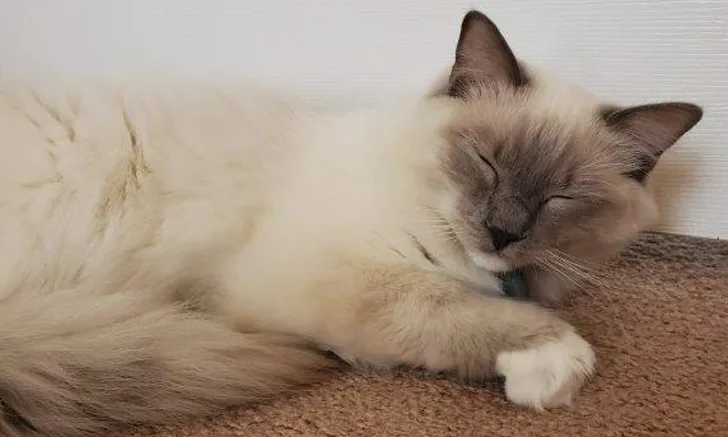Quiz: Xenotransfusion in a Cat
Rebecca Smith, LVMT, VTS (ECC), University of Tennessee
Adesola Odunayo, DVM, MS, DACVECC, University of Florida

Hazel was presented with hematuria, lethargy, and recent unresponsiveness. Image courtesy of Dr. Rose Cherry and Dr. Kryssa Johnson
Xenotransfusion (ie, the transfer of blood from one species to another) has been included in the medical literature since the early 1600s, with the first procedure described as transfusion of blood from a lamb to a young boy. Although xenotransfusion is no longer commonly used due to the availability of modern-day transfusion techniques (eg, blood component therapy, species-specific products, commercial blood banks), unique circumstances may make it a practical alternative in cats. Clinicians should be aware of the clinical indications, complications, and expected outcomes of this procedure to ensure the benefits outweigh the risks.
Hazel, a 6-year-old spayed ragdoll cat, was presented unresponsive and in lateral recumbency after a 5-day history of hematuria and anorexia (Figure 1). She was current on vaccinations and flea and tick preventives, lived indoors only, and had no previous medical concerns.
On physical examination, her temperature was 94.4°F (34.7°C), heart rate was 150 to 170 bpm, respiratory rate was 44 breaths per minute, mucous membranes were pale, capillary refill time was prolonged at >3 seconds, blood pressure was 50 mm Hg systolic (Doppler), packed cell volume/total solids were 7%/5.4 g/dL, blood glucose was 204 mg/dL (11.32 mmol/L; reference interval, 80-120 mg/dL [4.44-6.66 mmol/L]), and lactate was 97.3 mg/dL (10.8 mmol/L; reference interval, <22.5 mg/dL [<2.5 mmol/L]).
An immediate blood transfusion was needed to improve oxygenation and tissue perfusion.